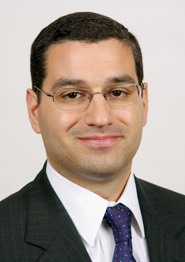Representatives from exchanges, brokerages, and money management firms on Friday called for a review of the hundreds of exchange order types in usage. Any such examination could mushroom into a broader review of market structure, they said.
“We can’t address this in isolation,” Joe Mecane, co-head of U.S. listings and cash execution at NYSE Euronext, said at an industry roundtable last week. “If we want to address this as an industry—and we should—we need to do a holistic review.”

Order types have proliferated into the thousands in recent years, making it difficult for institutional traders and other market participants to keep up with all the choices and their appropriate usage. Many are targeted, as well, at high-speed, automated traders.
That proliferation of order types in recent years is due to changes in the structure of the marketplace, Mecane said, and any examination must take account of overall market structure. The executive was speaking during a Web-based conference sponsored by the Investment Company Institute, a trade group that represents mutual fund and other investment management firms.
By some estimates there are 2,000 order types in use. Some trading execs—on both the buyside and the sellside—have complained that is too many. The beef is that their sheer numbers add undue complexity to the marketplace. Also, there is a concern that certain order types give advantages to some traders over others.
“The more these order types pile on, the more concerned we are,” Steve Sachs, head of capital markets for money management shop Proshare Advisors, said during the ICI webinar. “There are really only so many ways to skin the cat. We are very concerned about what they are doing to the level of complexity in the market. Do we really need hundreds and hundreds of order types? We’re not sure they have great value to the vast majority of market participants.”
A competitor agreed. Joe Cavatoni, a managing director in the capital markets division for the Americas at BlackRock, said exchanges need to determine if a newly introduced order type confers a benefit or not. “We do this with our own products,” Cavatoni said during the ICI webinar. “We ask ourselves: ‘Who are we trying to help here? Why are we introducing a change? What benefit are we bringing?’”
Mecane wasn’t the only exchange official at the ICI webinar calling for more dialogue around order types. Bill O’Brien, chief executive officer of Direct Edge, acknowledged that more information about the workings of these trading tools might be warranted.
“Exchanges can do a better job making sure there is clarity around the products we offer and how the buyside can use them to their benefit,” O’Brien said on Friday. “In the past, we’ve relied on the sellside to communicate those benefits, but at Direct Edge wewill do some more work to engage directly with the buyside.”
Although some industry execs are calling for a reduction in the number of order types, O’Brien cautioned against drastic action. “We have to strike a balance,” he said. “One person’s ‘complexity’ is another person’s choice.
At least one senior brokerage executive thinks an examination of order types is justified. “There exists a question about whether an overall review needs to be conducted to understand them,” Brett Redfearn, head of market structure at J.P. Morgan Securities, said at the roundtable. “There are probably too many. There is too much complexity.”
Whether the hundreds of order types are a symptom or a cause of the complexity in the marketplace justifies their review, Redfearn noted.




